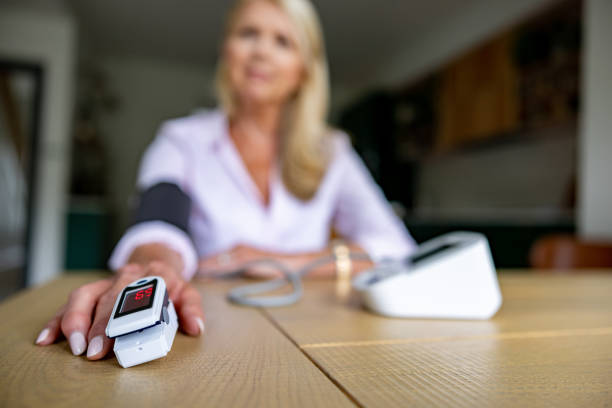In 2025, the Centers for Medicare and Medicaid Services (CMS) expanded and clarified billing pathways for Remote patient monitoring (RPM) and remote therapeutic monitoring (RTM) services delivered by Federally Qualified Health Centers (FQHCs) and Rural Health Clinics (RHCs). The updates provide clearer guidance on how to bill for these services and reflect CMS’s broader push toward value-based, technology-supported care models.
This article outlines 10 updated billing tips for RHC and FQHC remote monitoring programs.
Understanding FQHC Remote Patient Monitoring Programs
Remote monitoring uses digital technology to collect health data from patients outside of traditional settings and securely transmit it to providers. For FQHCs and RHCs, which serve many underserved or rural populations, RPM and RTM are tools to manage chronic conditions more efficiently, lower hospitalizations, and increase patient touchpoints without taxing in-person resources.
G0511 is still permitted through July 1, 2025, but CMS is transitioning FQHCs and RHCs to individual CPT codes for remote monitoring services. Billing teams should prepare for this change now to ensure uninterrupted reimbursement.
1) Updated Use of G0511
HCPCS code G0511 continues to be the primary code for billing RPM and RTM services in FQHCs and RHCs. CMS has clarified that G0511 may now be used to report both RPM and RTM services, as long as the time and service criteria are met. No, you can’t double dip for the same minutes—but you can rotate between types of services as long as documentation supports it.
2) FQHC Remote Patient Monitoring 2025
The national average reimbursement for G0511 in 2025 is $75.68, slightly up from 2024. While this is still bundled pricing, it reflects increased recognition of digital care’s value. Track costs and make sure your margins are holding up.
3) Expanded Time Tracking
CMS reaffirmed that G0511 is billable per 20-minute increments, with a maximum of one unit per patient per calendar month. Even though services like RPM can occur throughout the month, all time must roll up into one billable unit (at least 20 minutes).
4) Billing for Both RTM and RPM
CMS clarified that RTM and RPM can both be billed under G0511 as general care management. This is a huge door-opener—think musculoskeletal recovery monitoring with RTM codes alongside chronic care RPM, all under one reimbursement framework.
5) No Separate RTM Codes (98975–98981)
FQHCs and RHCs still cannot bill Medicare using standard RTM CPT codes (e.g., 98975–98981). Instead, services must be bundled and billed under G0511, which includes RTM-type services.
Implementing FQHC Remote Patient Monitoring
To successfully implement and bill for RPM and RTM services, FQHCs should consider the following:
5) Documentation Requirements
Thorough documentation is needed for RPM billing. This includes recording the time spent on RPM activities, the specific services provided, and the medical necessity of these services. Implementing a robust documentation system can help ensure compliance and support billing claims.
6) Technology Infrastructure
Invest in reliable, HIPAA-compliant RPM platforms. This may include secure data transmission systems, patient portals, and integration with existing electronic health record systems. Ensure the chosen technology is user-friendly for both staff and patients.
7) RPM Devices in RHC and FQHC Remote Patient Monitoring
Choose the proper remote patient monitoring devices for your FQHC remote patient monitoring population. Consider factors such as device accuracy, ease of use, and compatibility with your chosen RPM platform. Establish processes for device distribution, maintenance, and troubleshooting. Providing adequate patient support for device usage is crucial for program success.
8) Staffing and Training
Ensure your team is well-versed in RPM procedures and RHC and FQHC billing requirements. This may involve hiring additional staff or training existing staff on new technologies and remote patient monitoring workflows. Consider designating RPM coordinators to oversee the program and act as points of contact for patients and providers.
9) Patient Education
Engage patients in understanding the benefits of RPM and how to use the technology effectively. Develop educational materials and provide ongoing support to encourage patient participation and adherence to RPM protocols.
10) Measure FQHC Remote Patient Monitoring Program Success
Establish metrics to evaluate the effectiveness of your FQHC remote patient monitoring program. Regularly review these metrics to identify areas for improvement and demonstrate the value of RPM to stakeholders.
-
- Provider satisfaction
- Patient satisfaction
- Population health clinical outcomes
- Individual clinical outcomes
- Meeting the program budget
- Return on investment (ROI)
The Future of Remote Patient Monitoring for FQHCs
As this billing change takes effect, we’ll likely see increased adoption of RPM services across FQHCs. This could improve patient outcomes, especially those with chronic conditions, and potentially reduce healthcare costs.
FQHCs interested in implementing RPM should start by assessing their patient population’s needs and current technological capabilities. Consulting with healthcare technology experts and billing specialists can help ensure a smooth transition to offering and billing these valuable services.
By embracing RPM, FQHCs can enhance their care delivery model, improve patient engagement, and strengthen their financial position while continuing to fulfill their crucial role in community health.
Tenovi FQHCs And Trividia Health
Whether your healthcare partners are interested in adopting RPM for RHCs or FQHCs to increase patient engagement, create a more efficient workflow, or increase revenue, Tenovi can help you find the best RPM device and software solution. Choose from a growing list of Tenovi and partner FDA-cleared RPM devices.
Book a free demo today to learn more about how Tenovi’s Cellular Gateway and Trividia’s TRUE METRIX AIR blood glucose meter can significantly lower the cost of diabetes care management for FQHCs while improving patient care. This affordable, covered solution, especially when integrated with the 340B program, provides a pathway for FQHCs to expand their services, unlock new revenue streams, and continue to deliver high-quality care to underserved populations.


